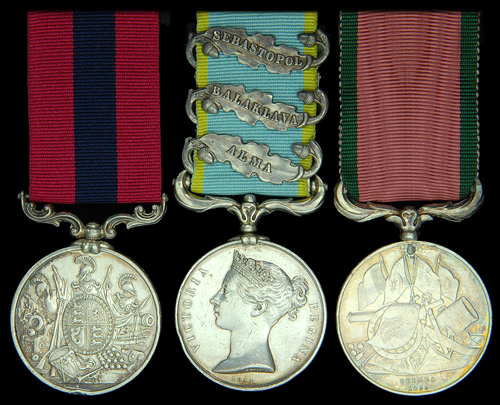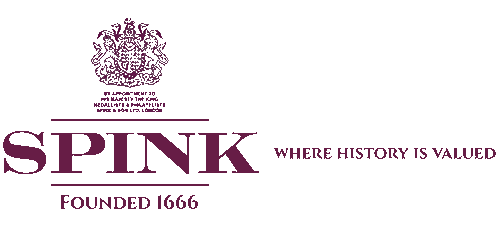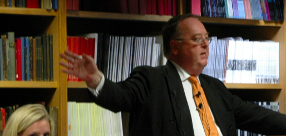
Auction: 8016 - Orders, Decorations, Medals & Militaria
Lot: 288
The Scarce 93rd Highlanders, Crimea D.C.M. Group of Three to Private D. McTavish, Present in ´The Thin Red Line´ at the Battle of Balaklava, 25.10.1854 a) Distinguished Conduct Medal, V.R. (Duncan Mc.Tavish. 93rd. Highlanders) b) Crimea 1854-56, three clasps, Alma, Balaklava, Sebastopol (Pte. Dunn. Mc.Tavish. 93rd. Ft.), contemporarily engraved in large serif capitals, suspension claw re-affixed c) Turkish Crimea, British die, plugged and fitted with a Crimean-style swivel suspension, unnamed as issued, edge bruising, nearly very fine (3) Estimate £ 6,000-8,000 D.C.M. Recommended 8.1.1855 1119 Private Duncan McTavish, D.C.M., born Daviot, Inverness, 1818; enlisted in the 93rd (Sutherland) Highlanders, October 1837; served with the Regiment in Canada, January 1838-September 1848; departed for Malta en route for the Crimea, April 1854; present at the Battle of the Alma, 20.9.1854, and the Battle of Balaklava, 25.10.1854. ´That Thin Red Streak Topped with a Line of Steel´ At 7:00 am on the 25th October, a force of 25,000 Russians, with 78 guns, under the command of General Liprandi, advanced from the far end of the North Valley. Their task was to capture Kadikoi and cut off the British supply port of Balaklava. Following the capture of the four Redoubts of the front line, the Russian cavalry made a two-pronged attack on Kadikoi. The first prong of 400 sabres crossed the Causeway Heights between the 2nd and 3rd Redoubts and headed straight for Sir Colin Campbell´s position on the high ground to the left front of the village of Kadikoi. As well as his 500 kilted and bearded Highlanders of the 93rd, Campbell had 150 assorted soldiers, including some 30 to 40 Guardsmen, who had been hurried up from Balaklava, and the remnants of the Turkish Battalion in support. As the Russian cavalry, six Squadrons of the Grand Duke of Saxe-Weimar Hussar Regiment and three Squadrons of Don Cossaks, approached at the gallop, Campbell ordered his men into two lines, with his beloved Highlanders in the centre. Riding along the line, his orders were simple and effective: "There is no retreat from here, men! You must die where you stand!" Spotting their quarry, the Russians in one grand line charged: ´Gathering speed at every stride, they dashed on towards that thin red streak topped with a line of steel. The Turks fired a volley at eight hundred yards and ran. As the Russians came within six hundred yards, down went that line of steel in front, and out rang a rolling volley of Minié musketry. The distance was too great, the Russians were not checked but swept onwards, here and there knocked over by the shot of our batteries, but ere they came within two hundred and fifty yards another volley flashed from the rifles. The Russians wheeled about and fled faster than they came. "Bravo, Highlanders! Well Done!" shouted the excited spectators. The 93rd never altered their formation to receive the tide of horsemen. "I did not think it worth while to form them even four deep" said Sir Colin Campbell. The ordinary British line, two deep, was quite sufficient to repel the attack of those Muscovite cavaliers.´ (Letters from The Crimea by W.H. Russell, The Times correspondent, refers). Thus the scene was set for the Heavy Brigade to rout the Russian cavalry, and the Light Brigade to Charge to immortality. Alone amongst infantry Regiments, the 93rd were commanded to bear, in commemoration of their gallant conduct, the honour "Balaklava" on their Regimental Colour. Fifteen Distinguished Conduct Medals were won by the Regiment, and they were all Recommended on the same date, 8.1.1855. Interestingly, the Distinguished Conduct Medals awarded to men of the Heavy Brigade for the Battle of Balaklava were Recommended over the period 3-21.1.1855; and those to men of the Light Brigade for the Battle of Balaklava were Recommended over the period 10.1-13.2.1855. McTavish was sick at Balaklava, and was sent to Scutari, 12.8.1855; returned to England, 21.8.1855; presented with his Distinguished Conduct Medal, 18.5.1856; discharged February 1859, having gained 3 Good Conduct Pay Badges, after 21 years and 4 months with the Colours.
Sold for
£8,500




